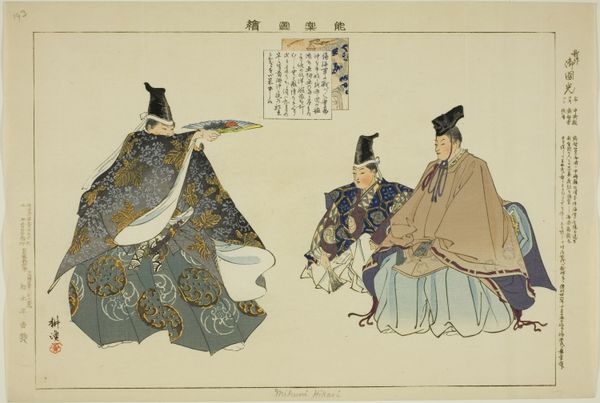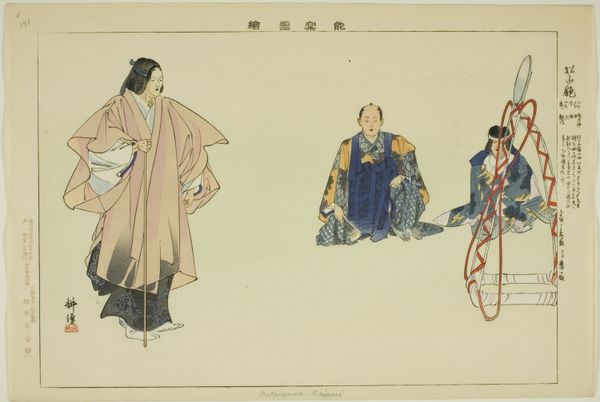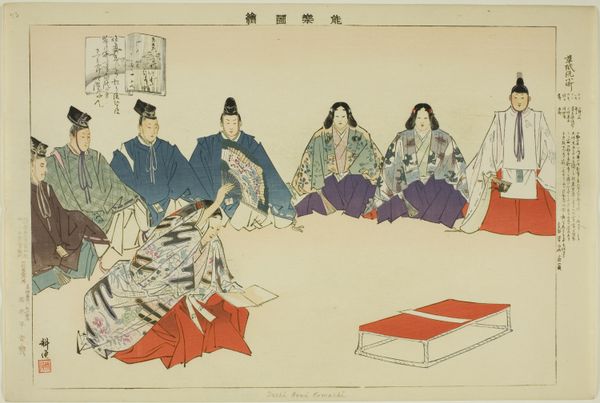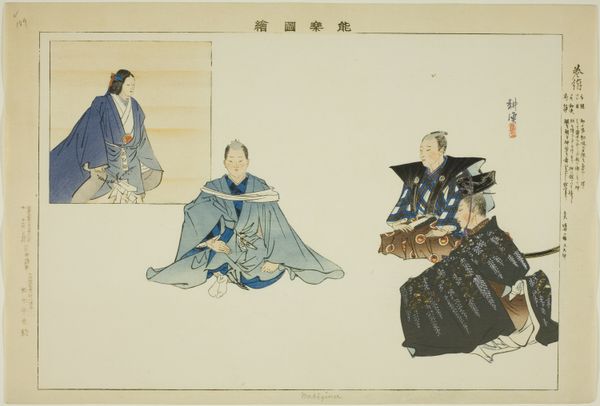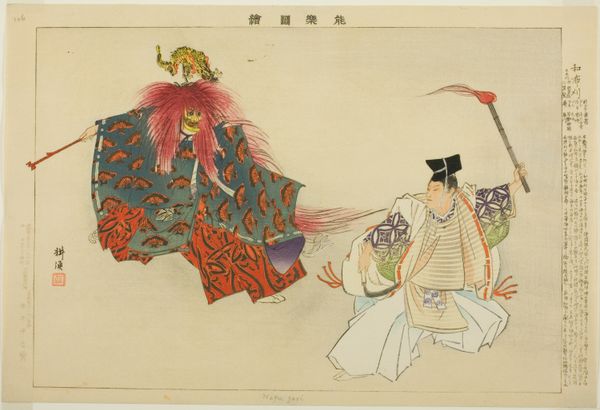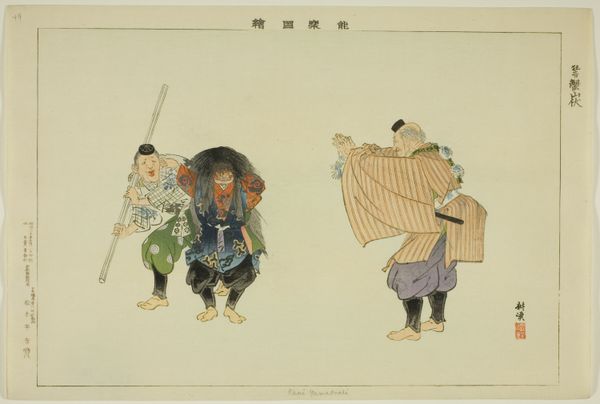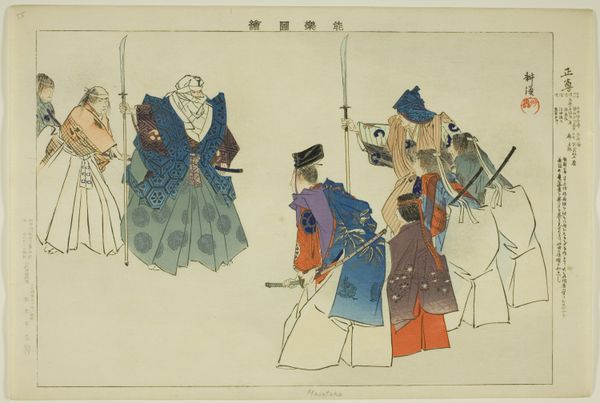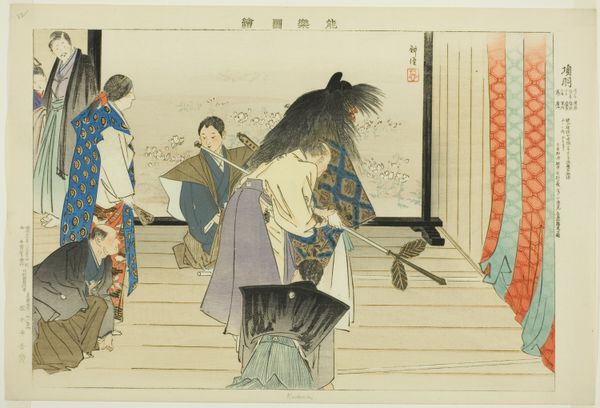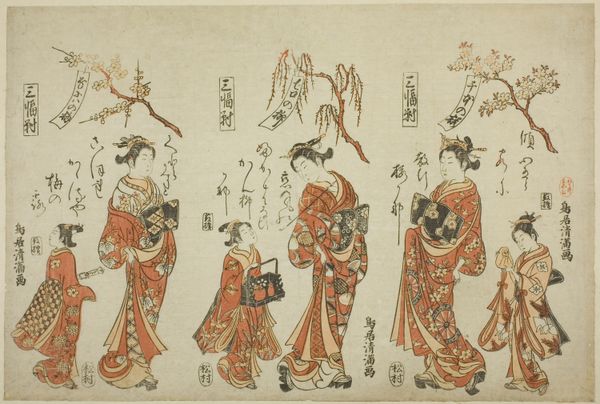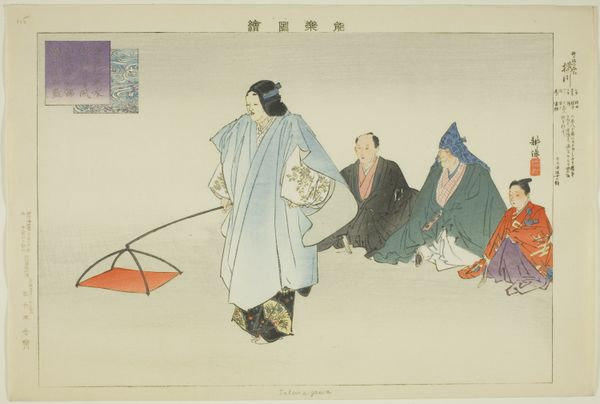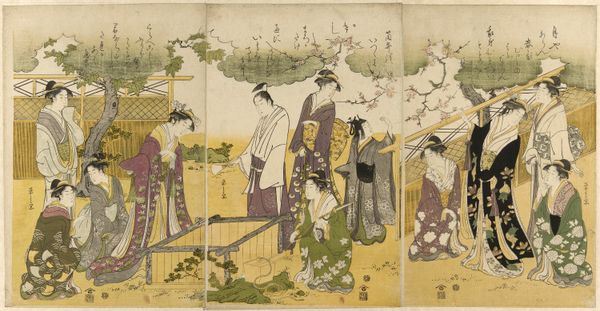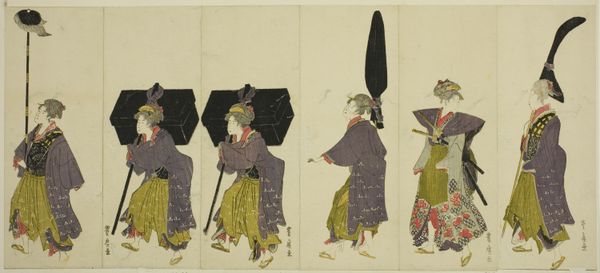
Kosode Soga, from the series "Pictures of No Performances (Nogaku Zue)" 1898
0:00
0:00
Dimensions: Approx. 25.2 × 37.4 cm (10 × 14 4/3 in.)
Copyright: Public Domain
Curator: This is Tsukioka Kōgyo's "Kosode Soga, from the series Pictures of No Performances (Nogaku Zue)," a woodblock print dating back to 1898, now housed here at the Art Institute of Chicago. Editor: My first impression? It's almost theatrical, like a scene frozen mid-performance. The figures, with their elaborate costumes and serene expressions, have this poised, dreamlike quality. Curator: Indeed, this print is part of a series that captures moments from Noh theatre, a classical Japanese dance-drama. Examining Noh performances in the Meiji era provides insights into the preservation and reconstruction of national identity during Japan’s rapid modernization. The performance highlights the symbolic meaning of dress in connection to themes such as wealth, status, and lineage. Editor: Right, that context totally unlocks it! So it's not just a pretty picture, but a cultural document too. I’m curious about their clothes, which look incredibly detailed despite being a print. Curator: Absolutely. The printmaking technique, ukiyo-e, allowed for meticulous detail and vibrant colors. Considering costume, social position, gender identity and the performance conventions surrounding Nogaku in the Meiji era, we can gain further insight regarding broader issues surrounding gender, identity, cultural expression, and political change during the period. The artist also skillfully employed color to convey character. Editor: It strikes me how static the figures are. Do you think that’s intentional, mimicking the highly stylized movements of Noh? Curator: Precisely. The artist isn't aiming for realism but capturing the essence, the symbolic gesture that defines Noh. The actors are meant to be these archetypal figures. Editor: There's this subdued palette to the print, not overtly bold. But in the attire, especially that robe with the white patterned elements, the artist still evokes luxury and importance. Curator: Which points to the complex power dynamics within the period; those performances existed within political frameworks that legitimized the elite, emphasizing the historical legacy as a way to both unify and distinguish certain class hierarchies during that pivotal time. Editor: Well, I never would have guessed so much social commentary was going on, looking at something so refined. Definitely got me thinking! Curator: Artworks such as this compel us to explore how performance traditions and representation have been deployed in nuanced negotiations of identity. It's all connected.
Comments
No comments
Be the first to comment and join the conversation on the ultimate creative platform.
